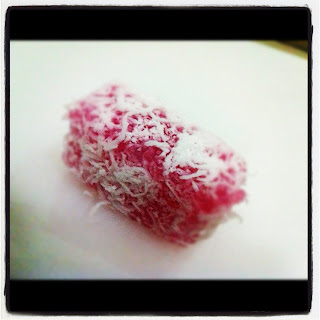If you are looking to sink your teeth in soft, sweet, caramelized, round dough, then Gulab Jamun is a must try! It is a traditional Indian dessert and is popular in Indian subcontinent countries such as India, Pakistan, Sri Lanka, Nepal and Bangladesh.
The term Gulab originates from the Persian word gulab which means rose water. The syrup that the dough's sits in is known as the rose water syrup. Jamun on the other hand is a Hindustani word and it refers to a South Asian fruit which has the similar shape and size to the dough above. Gulab Jamun is a dough traditionally made from thickened milk or reduced milk and it is the soaked into the rose water syrup.
During Indian festivals or prayers of any sort, it is a must to have sweet delicacies at the alter. It is an offering and also a tradition that has been practiced for many years. As an Indian myself, sometimes i do get a little overwhelmed by the varieties of desserts we have. Nevertheless, Gulab Jamun has always been my favorite.
Two weeks ago, a relative of mine held a prayer ceremony for their youngest daughter coming of age. It is tradition to hold a prayer when a young girl comes of age in an Indian culture. As per tradition, the girls close relatives would attend the prayers with trays and trays of sweet delicacies as part of an offering. My mother, being one of the close relatives did a little sweet shopping herself. She bought Tupperware's of Gulab Jamuns from Asoka Restaurant on Jalan Tengku Kelana situated in Klang.
It was a memorable experience as i got to indulge in sweet goodness. It is literally one of those desserts that melts in your mouth.
The texture of the dough is soft and soggy because it is soaked in the rose water syrup. The dough absorbs the sweetness from the rose water syrup. Each bite is pure goodness. It is definitely a dessert that would please almost everyone, in my opinion. It is also a dessert that is easily consumed because its soft, especially for those with brittle teeth.
I would say that the Gulab Jamun from Asoka's Restaurant in Klang is definitely the best one I've tasted
so far. It is addictive and delicious. Though, this dessert might not be recommended for those who are diabetic. For those who are free of diabetes, it would be best to indulge in desserts like this on ocassion, cause you don't want to ruin those sweet tooth's now, do you?
This has been my experience so far with my Indian dessert. Be sure to check out my next sweet-venture!
-Gulab Jamun.-
-Jalan Tengku Kelana.-
Shajni Nair
0102866/57205
















